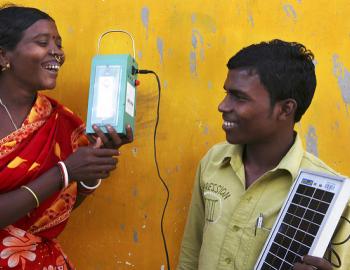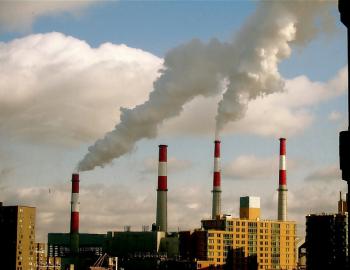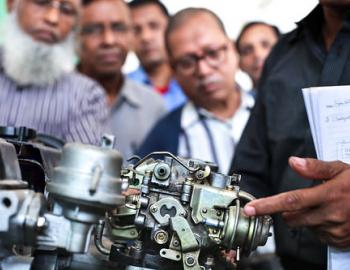WORKING PAPER: The Sustainable Development Goals - Will they deliver climate compatible development for vulnerable countries?
WORKING PAPER: The Sustainable Development Goals - Will they deliver climate compatible development for vulnerable countries?
Climate change is one of the most pressing challenges the world faces today. It affects all aspects of the development agenda, from poverty eradication to health care, to economic growth and disaster risk reduction. Meanwhile, the success of global action on climate change will depend on the development path taken by all countries. 2015 will be a crucial year for global action on both climate change and development, with the United Nations Framework Convention on Climate Change (UNFCCC)’s post-Kyoto deal on climate change, the post-2015 sustainable development goals (SDGs) and a future framework on disaster risk reduction all set to be finalised.
This convergence of timelines offers a unique opportunity to achieve coherence between international policies on climate change, sustainable development and disaster preparedness. Some see the coinciding milestones in the climate and development agendas as an unprecedented chance to promote climate compatible development – an approach that would offer developing countries the opportunity to achieve long-term, sustainable development outcomes that are resilient to the impacts of climate change. These opportunities are explored in a new CDKN Paper by Helen Picot with Nicholas Moss of PwC: The Sustainable Development Goals: Will they deliver climate compatible development for vulnerable countries?
The Open Working Group (OWG)’s proposal for the SDGs, to be presented to the United Nations General Assembly at the end of September, features climate change as a goal and also recognises climate change impacts in some of the targets under other goals. Over the next year of inter-governmental negotiations, there is an opportunity to further refinement of the goals. CDKN held national dialogues in Colombia, Kenya and Indonesia to facilitate an exchange of views among stakeholders from across government, civil society, academia and the private sector on how best to include climate change in the SDGs in a way that encourages climate compatible development.
This paper highlights key concerns and principles that emerged in the three consultative events, and ways that these principles could be implemented in practice. The authors Helen Picot and Nicholas Moss conclude, based on the country debates, that:
- The SDGs should be seen as an opportunity for developing countries rather than a burden, given how important climate resilience is to protecting and furthering development progress in vulnerable countries. Meanwhile, the content of the SDGs must still allow for countries to develop economically. Goals should be reviewed to test that they are achievable and realistic in light of future climate scenarios across sectors, including sectoral economic impacts from climate change. Indicators should allow the right level of flexibility for nationally appropriate implementation.
- Noting the potential issues in overlap and timing with the UNFCCC, a stand-alone goal should be retained in the SDGs. But this must be alongside the mainstreaming of climate change into the other goals, such that climate and development do not become siloed.
- The SDGs should be drafted in a way that allows for interpretation in a nationally relevant way and that is useful for informing national development plans – for example, Green Growth strategies – as well as reducing countries’ vulnerability to climate change.
- Goals should be ‘climate smart’. This means including carefully chosen indicators that provide measurable climate targets for each development goal, to ensure that the climate impacts on that development area can be specifically managed and that progress can be robustly assessed.
- Financing will need to be carefully coordinated to avoid duplication between different sources. The GCF and other sources might be used to support an integrated climate goal, but it is important that gaps are not created by leaving climate compatible development financing to UNFCCC institutions.
- Countries should aim to achieve coherence between the SDG and UNFCCC agendas at a national level. There should be more alignment of the climate and development agendas within governments, such that the departments coordinating with the UNFCCC also collaborate on domestic development policies.



